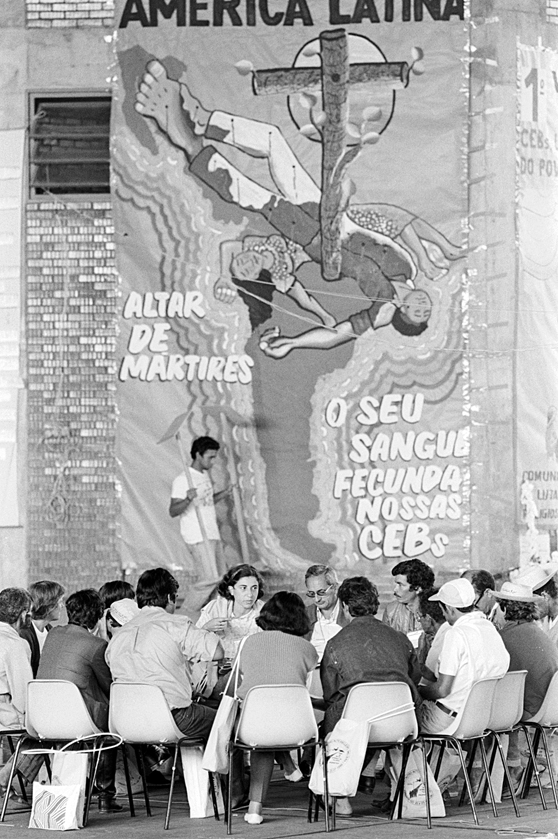A History of World Societies:
Printed Page 960
A History of World Societies Value
Edition: Printed Page 972
Dependency and Development Theories
In 1948 the United Nations established the Economic Commission for Latin America (ECLA) in Santiago, Chile, to study economic development. Under the direction of Argentine economist Raúl Prebisch, ECLA produced one of Latin America’s most influential intellectual contributions of the twentieth century: a diagnosis of reasons why Latin America, like other less industrialized regions of the world, remained economically and technologically dependent on Europe and the United States, along with prescriptions for remedying that dependency. These ideas formed what became known as dependency theory.
According to dependency theory, countries in Latin America, Africa, and Asia were trapped in the position of borrowers of capital and technology, and producers of primary commodities such as agricultural and mineral goods. Since western Europe and the United States industrialized in the nineteenth century, they secured a lasting economic advantage magnified by colonialism and neocolonialism, which reorganized production and consumption around the world for their benefit.
According to this analysis, the prosperity of Europe and the United States was built on the impoverishment of other regions of the world because the products that industrialized countries made were worth more than the agricultural or mineral exports of other nations. For instance, in 2013 one would need to harvest 70 million pounds of coffee to purchase a Boeing 737 aircraft, while Boeing’s shareholders and workers could afford enough coffee to stay awake for a very long time. This inequality in the market value of goods increased over time as the relative value of commodities such as coffee or copper decreased relative to the value of manufactured goods like automobiles or technologically advanced goods like computer software.
How could this pattern be broken? Could a country that grew coffee become a country that manufactured jets? This question would be asked many times around the world in the second half of the twentieth century, and it would be answered in many ways.
One approach was modernization theory, championed by U.S. economist Walt Whitman Rostow. He suggested that societies passed through phases of development from primitive to modern, and that adopting the political, economic, or cultural practices of places like the United States was the best remedy for poverty. (See “Viewpoints 31.1: Modernization, Dependency, and Development.”) Modernization theory shaped foreign aid programs: the U.S. government deployed armies of experts around the world to advise governments and communities in areas ranging from revising legal codes to digging wells. These technicians often did not understand local conditions, believing that the American way was the only way. Regardless of their intentions, or the abundance of funding that backed them, these projects were often riddled with unintended negative consequences, and many people began to mistrust these experts.
To peoples emerging from colonialism, dependency theory offered a more appealing path. Newly independent nations faced enormous pressure for economic development. Rural poverty pushed millions into cities where good jobs were scarce. Cities and the countryside alike had insufficient schools and health care. Dependency theorists rejected liberalism because they believed free-

The governments that attempted land redistribution or the nationalization of foreign firms often faced a fierce backlash by landowners, foreign corporations, and political conservatives. In many cases, reformist governments were deposed in military coups supported by the United States. The U.S. reaction against reformers in countries like Guatemala, where the elected government was overthrown in a coup organized by the United States in 1954, pushed reformers in other countries into more radical and defiant approaches. In Cuba a revolutionary movement led by Fidel Castro took power in 1959. Castro’s regime executed a deep social and economic transformation of Cuba, including the redistribution of land and urban properties. This pressure from the United States pushed revolutionary Cuba into an alliance with the Soviet Union. The Argentine military strategist who worked closely with Castro, Che Guevara, became an icon of radical revolutionary liberation. Guevara wrote a widely read handbook for would-
One of the most influential areas where the idea of liberation crystallized was a movement within the Catholic Church called liberation theology. The movement emerged in Latin America amid reforms of church doctrine carried out by Pope John XXIII (pontificate 1958–
Drawing on dependency theory and sometimes verging on revolutionary Marxism, priests attracted to liberation theology challenged governments, fought against landowners and business owners they saw as oppressors, and formed community organizations, or ecclesiastical base communities, where the residents of poor neighborhoods could gather to discuss their problems and devise solutions. After the 1970s, Popes John Paul II (pontificate 1978–